by Louis Weinstein
I was seventeen and working for Deutsch and Shea Advertising Agency in New York. It was April 5, 1963. The news of my father's death in Gary, Indiana the day before wasn't too painful, for I had hardly known the man. It had been years since I'd seen him; sometimes I would almost forget that I had a father. I knew he had been a good merchant - always making a living, but never more. I believed that by profession he had been a pawnbroker, junk man, TV and radio repairman, appraiser, seller of used clothes and appliances, and trader - all of which he practiced under the name of "Irving's Trading Post."
At the time of its closing in 2007 after forty-four years in business, Heritage Bookshop, established by Louis and Ben Weinstein and ultimately located in a former mortuary on Melrose Avenue in West Hollywood, California, that they morphed into an English chapel library with stained glass windows, had grown from nothing to become the most successful and respected rare and antiquarian book shop on Earth. Rosenbach Company was the dominant force in the international trade in first half of the 20th century, Heritage during the second half.
If A.S.W. "Abe" Rosenbach was the greatest rare book salesman the world had ever seen - and he was - then Lou Weinstein was most certainly his successor, raising the bar and setting a new standard.
Humor played an enormous role in his rise to the top. He never saw an opening he didn't step into with a quip, often irreverent, a quality that endeared him to clients and colleagues. You have, hopefully, mastered the "spit-take;" reflexive opportunities will arise throughout Lou's tale. As a prelude, I leave you with the following true story, one of many in the Weinstein treasury.
One Christmas, Dustin Hoffman and his wife were in the shop to pick out a few presents. Hoffman gave Lou a Los Angeles address for the invoice. Puzzled, Lou said, "I always assumed you were from New York."
"No," replied Hoffman, "I originally went to New York for acting classes."
"Oh, really?" Lou replied. "Did it help?" [SJG].
I was seventeen and working for Deutsch and Shea Advertising Agency in New York. It was April 5, 1963. The news of my father's death in Gary, Indiana the day before wasn't too painful, for I had hardly known the man. It had been years since I'd seen him; sometimes I would almost forget that I had a father. I knew he had been a good merchant - always making a living, but never more. I believed that by profession he had been a pawnbroker, junk man, TV and radio repairman, appraiser, seller of used clothes and appliances, and trader - all of which he practiced under the name of "Irving's Trading Post."
Ben and I packed for Gary to deal with those things that must be dealt with by next of kin. In truth I'd heard of Indiana but "Gary" was a total mystery. I knew Chicago was not far.
When we arrived, it was explained to us by the attorney reading the will that my father's estate consisted of a $3,000 insurance policy and his business. With luck the $3,000 would cover the funeral and legal fees. The business, yet to be seen, was the asset left to his eight children, of which I was the youngest. Realizing that this was my only inheritance (for my mother had died twelve years before), and I hadn't any relatives asking for a recent address, I figured this was it.
Driving to the store made me nervous, for the streets reeked of poverty. We must have passed a hundred winos, pimps, hookers, and run-of-the-mill hoodlums within a half mile of the shop. The sign was simple, "Irving's Trading Post - We Buy and Sell Everything." It occurred to me that it was ideally located for its clientele. The window was full of used clothes, guns, tools, knives, eyeglasses, and good reproductions of costume jewelry. In the right corner as we entered stood a four-shelf bookcase, which, though unknown to me, would be a large part of my destiny. "Used books individually priced," the sign read.
Brothers, Jerry and Bob, arrived from the West Coast, and the search was on. We spent the first four hours looking through my father's world, trying to decide why people would pay real money for such junk - broken radios, clocks with only one hand (for good guessers?), lots of clothes with lots of holes (not stylish but functional). In the back room an old American flag draped his bed; it lacked a few stars, but who counted? By the front door, proudly mountd under glass, were officer's bars from the U.S. Army - Lieutenant, Captain, Major - neatly captioned, "Irving's own - Not for sale." Pretty impressive for a man who never made sergeant!
Probably a good deterrent for a would-be thief. The officer who found my dad's body (in front of the store) told me my dad was "packin'." Later I understood this to mean he had three loaded weapons in his possession. Nice neighborhood!
The search continued into the night, for we all knew Dad loved to hide his valuables. In the basement behind some loose bricks in the wall, we found a checkbook and a map. The checkbook's balance was too low to pay for the cab ride to the bank. The map was familiar. It seems my dad had mentioned a map he acquired (from a local wino, no doubt) of a cemetery in East Germany with the location of a half million dollars in gemstones buried at the end of the Second World War. The fantasy was intriguing, but who knows if it's still there and what it is. I've often been tempted to put the map in a Heritage catalogue as:
Map. Manuscript, folded. Buried treasure. $1/2 million worth.
Unpublished, of course. $5,000 net. No 'on approval" orders. I wonder how many I could sell.
It was decided we should have a sale, disposing of what we could, maybe even earning enough to cover our flight home. I quickly realized that at the right price almost anything is saleable. I started to gain respect for the items I had thought of a week before as mere junk. It was definitely a learning experience and my first real exposure to the world of business and barter. I was excited!
I had to get back to New York, to my job of proofreading copy for classified ads. In the 'help wanted" sections were ads for engineers, systems analysts, technicians; it quickly grew boring. I missed the muck of Gary, the negotiating, the trading, the surprises. Ben had less to miss, for he was managing a home-made fudge shop in New Jersey. Bob went back to his air Force station in Coos Bay, Oregon.
Ben and Jerry decided to move the remaining treasures to California and perhaps carry on a business in the tradition of my father. After all, they had thirty days' experience in the trade, so it wasn't as if they were going into it blind. Off they went with their fake jewelry, clothes with holes, toasters that hadn't touched bread in years, broken guns and miscellaneous objects we never could identify. They also brought the four shelves of unsold books, each neatly stamped on the front flyleaf, "Irving's Trading Post, Gary, Indiana."
Off they went, goodies and all, to Beverly Hills, California to find an appropriate location for the new shop. It was quickly discovered that if the price of every item in the inventory was doubled and everything completely sold out in thirty days, they still wouldn't have enough to meet the first month's rent. A second choice of location, of somewhat lesser prestige, was made - Compton, the Harlem of Los Angeles. The rent for the 2800-square-foot store was $200 per month - a lot of money but not impossible.
By July, I was hot and ready to join them in their new venture, "B&J Merchandisers." Jerry picked me up at L.A. International Airport on July 2nd and freely shared with me the glories of being self-employed, with your own hours and unlimited income. I was intrigued. Within weeks a settlement was reached. I was to exchange my entire net worth for Jerry's half interest in the new business. Now $300 was a lot of money, but heck, I was seventeen and without promise of a profession, so I decided to chance it. It was hardly a week before I realized that suing your own brother was impractical. "Your own hours" turned out to be 7 AM to 7 PM, seven days a week. "Unlimited income" meant there was no limit on how little you could make in an eighty-hour week!
The shop was located on a main street (Compton Blvd.) and catered to a local clientele of mostly Blacks and Mexicans. Due to a frugal lifestyle, we were able to reinvest what monies did come into building an inventory.
Within six months we had a store full of rarities, including appliances, clothes, tools, jewelry, and lots of books. Books, it seems, were acquired rather easily, for the word got around that Ben and I had a high school education. We paid five cents for any hardback and two cents for paperbacks (still do). It appeared that fifty percent of all Comptonians were in the business of cleaning and hauling from other people's garages. Books were previously considered unsaleable in this community until B&J Merchandisers arrived.
One day in November, four thousand volumes later, I pointed out to Ben that we probably accumulated the world's largest collection of Reader's Digest condensed books. Perhaps at five cents for hardbacks we were paying too much, so we lowered it to two cents - a major management decision. Beyond this we realized the only books we could sell in this low income community were "how-to fix it yourself" books - for cars, televisions, air conditioners, dinners, or divorces.
About this time a book scout named Al Taylor walked into our shop. He tried to convince us that some old books were worth ten dollars or more. That gullible we weren't! Fortunately for us, Al spent days in the weeks ahead explaining some realities about the trade. Fiction was virtually worthless, he stated; cookbooks, Americana, picture books, and auto-repair manuals were hot stuff. Our appetites were whetted, but we needed to learn more, so from an old AB [American Bookman] which Al had given us, we ordered the newest reference book, Roskie, The Bookman's Bible. This book listed books chronologically, then by author's initials, then by titles. Thus Baum's classic, The Wonderful Wizard of Oz, published in 1900, would be found as "1900B.L.W.W.O.O. 300 (value)." After I conquered the cryptography the detective work really appealed to me. Within a few weeks Ben and I had this funny little book memorized. At this point we figured we had conquered the profession of antiquarian bookselling.
One Sunday afternoon a visitor came to our door. His name was Peter Howard.
"Do you have any first editions of William Faulkner?" he asked.
"One second," I said, as I turned to call to Ben, who was working in the back, alphabetizing the Reader's Digests. "Hey, Ben, did you ever hear of William Faulkner?"
A long, thoughtful pause was followed by, "Did he write cookbooks or auto-repair manuals?"
Peter's eyes brightened as if we had said, "Yes, we have his entire archives."
"You never heard of William Faulkner?" he reiterated.
"Uh-uh," came my fluid reply.
Peter turned to his companion and said, "This is going to be fun."
Three hours later, an impressive stack of fourteen titles stood on our counter - all fiction.
"Ben," I whispered, "I think we have a live one here."
Perhaps he'd like a complete run of Reader's Digest condensed, I thought to myself. The man's vocabulary was somewhat peculiar. He used such terms as issue, proof, variant, wrapper, state. Perhaps we had found our first collector! The total purchase was $27.00 - a calculated profit of $26.30, I mused. He seemed pleased, so I didn't feel I took advantage, even though he didn't ask for a discount.
"Nothing signed?" he asked on the way out.
This I understood (from my talks with Al Taylor), and I pointed to our signed book shelf in excitement. He perused the thirty titles in four seconds and left.
"Not too knowledgeable a collector," I said to Ben, "passing up the cream of my scouting."
After all, the shelf included two cookbooks, seven fix-it books, four self-help titles, some major Arkansas poets and even a lieutenant governor - all in presentation copies. After he left, Ben realized we had neglected to show this fiction collector our greatest find - a presentation copy of Aimee Semple McPherson's, acquired a week before, at our regular hardback offering of five cents. The book was proudly displayed, open, in our front window. I reached in to reassure myself it was still there.
"Ben," I screamed, "someone robbed it!"
"The book?" he asked.
"No, the signature." It seemed that one week of direct sunlight had completely eradicated the inscription. Thank goodness it wasn't the inscribed Dale Carnegie, I thought.
After seven months I decided it was time to weed the stock, which now amounted to some 7,000 volumes, for space was quickly becoming a problem. Satisfied with my knowledge of what titles were in demand, I made it my morning project to cull out four boxes of books, destined for the trash. During lunch a man drifted in to browse.
"What's in the boxes?" he asked.
"Some new arrivals," I quickly replied, thinking I could sell one. "Help yourself."
After he had browsed through our stock for half an hour I didn't have much hope for him. but who knows? Three minutes later, he pulled eight books from the dregs, paid me and left.
This experience somewhat unnerved me, for he had just purchased my garbage.
I quickly and quietly returned the balance of the four boxes to the shelves. Somehow I was no longer up to the project. Perhaps I should put our entire inventory in boxes on the floor, I thought. It might be a bonanza. That evening, Ben checked for cars on the street. None were coming, so we closed early (9:30 PM) and indulged in a steak at the Sizzler.
By the ninth month, I counted 8,500 volumes in hardback, with most of our money, time and energy going into replenishing the inventory. Our reference library now consisted of forty volumes, mostly price guides and catalogues, some of which were less than twenty years old. We found ourselves quickly losing interest in the junk business - too much competition and a depleting stock.
In truth, the store was a good learning experience and an example of the adage, "There's a customer for everything." One day a man came in to buy an overcoat and found a suitable one for $10.00. He left his old one behind, asking if we would dispose of it for him. After he had left, Ben dusted the old coat and put it on the clothes rack. By the end of the day, it was gone, with another ten dollars in the till.
Our one-year lease was coming due, and a decision had to be made. I wrote to Gerald, a brother in New York, and told him of my options. I could either open a used book shop or a floating hot dog stand. It seems when I went out to the ocean, I noticed hundreds of boats, but never a food concession in the water. A floating restaurant, serving hot dogs, had to be a wonderful idea.
Gerald wrote me back, and I quote, "Lou, you've always trusted my judgment, you know I am a person of good business sense and reason. No one buys used books but a floating hot dog stand? I love it!"
Somehow God blessed me to ignore his wisdom. Who knows? I might this day, with my chain of floating hot dog stands, be writing this article for The Professional Hot Dog Boatman. Somehow, though, I feel we made the right decision.
"One second," I said, as I turned to call to Ben, who was working in the back, alphabetizing the Reader's Digests. "Hey, Ben, did you ever hear of William Faulkner?"
A long, thoughtful pause was followed by, "Did he write cookbooks or auto-repair manuals?"
Peter's eyes brightened as if we had said, "Yes, we have his entire archives."
"You never heard of William Faulkner?" he reiterated.
"Uh-uh," came my fluid reply.
Peter turned to his companion and said, "This is going to be fun."
Three hours later, an impressive stack of fourteen titles stood on our counter - all fiction.
"Ben," I whispered, "I think we have a live one here."
Perhaps he'd like a complete run of Reader's Digest condensed, I thought to myself. The man's vocabulary was somewhat peculiar. He used such terms as issue, proof, variant, wrapper, state. Perhaps we had found our first collector! The total purchase was $27.00 - a calculated profit of $26.30, I mused. He seemed pleased, so I didn't feel I took advantage, even though he didn't ask for a discount.
"Nothing signed?" he asked on the way out.
This I understood (from my talks with Al Taylor), and I pointed to our signed book shelf in excitement. He perused the thirty titles in four seconds and left.
"Not too knowledgeable a collector," I said to Ben, "passing up the cream of my scouting."
After all, the shelf included two cookbooks, seven fix-it books, four self-help titles, some major Arkansas poets and even a lieutenant governor - all in presentation copies. After he left, Ben realized we had neglected to show this fiction collector our greatest find - a presentation copy of Aimee Semple McPherson's, acquired a week before, at our regular hardback offering of five cents. The book was proudly displayed, open, in our front window. I reached in to reassure myself it was still there.
"Ben," I screamed, "someone robbed it!"
"The book?" he asked.
"No, the signature." It seemed that one week of direct sunlight had completely eradicated the inscription. Thank goodness it wasn't the inscribed Dale Carnegie, I thought.
After seven months I decided it was time to weed the stock, which now amounted to some 7,000 volumes, for space was quickly becoming a problem. Satisfied with my knowledge of what titles were in demand, I made it my morning project to cull out four boxes of books, destined for the trash. During lunch a man drifted in to browse.
"What's in the boxes?" he asked.
"Some new arrivals," I quickly replied, thinking I could sell one. "Help yourself."
After he had browsed through our stock for half an hour I didn't have much hope for him. but who knows? Three minutes later, he pulled eight books from the dregs, paid me and left.
This experience somewhat unnerved me, for he had just purchased my garbage.
I quickly and quietly returned the balance of the four boxes to the shelves. Somehow I was no longer up to the project. Perhaps I should put our entire inventory in boxes on the floor, I thought. It might be a bonanza. That evening, Ben checked for cars on the street. None were coming, so we closed early (9:30 PM) and indulged in a steak at the Sizzler.
By the ninth month, I counted 8,500 volumes in hardback, with most of our money, time and energy going into replenishing the inventory. Our reference library now consisted of forty volumes, mostly price guides and catalogues, some of which were less than twenty years old. We found ourselves quickly losing interest in the junk business - too much competition and a depleting stock.
In truth, the store was a good learning experience and an example of the adage, "There's a customer for everything." One day a man came in to buy an overcoat and found a suitable one for $10.00. He left his old one behind, asking if we would dispose of it for him. After he had left, Ben dusted the old coat and put it on the clothes rack. By the end of the day, it was gone, with another ten dollars in the till.
Our one-year lease was coming due, and a decision had to be made. I wrote to Gerald, a brother in New York, and told him of my options. I could either open a used book shop or a floating hot dog stand. It seems when I went out to the ocean, I noticed hundreds of boats, but never a food concession in the water. A floating restaurant, serving hot dogs, had to be a wonderful idea.
Gerald wrote me back, and I quote, "Lou, you've always trusted my judgment, you know I am a person of good business sense and reason. No one buys used books but a floating hot dog stand? I love it!"
Somehow God blessed me to ignore his wisdom. Who knows? I might this day, with my chain of floating hot dog stands, be writing this article for The Professional Hot Dog Boatman. Somehow, though, I feel we made the right decision.
__________
Heritage Bookshop - The First Year originally appeared in Issue No. 4, 1982 of The Professional Rare Bookman: The Journal of the Antiquarian Booksellers Association of America (ABAA), and is reprinted with the kind permission of the author.
__________
__________







































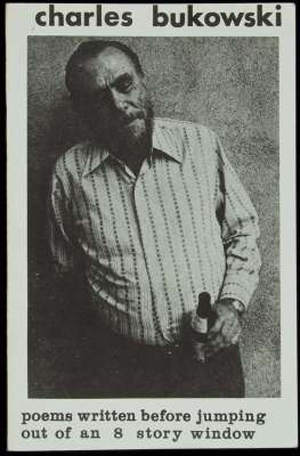


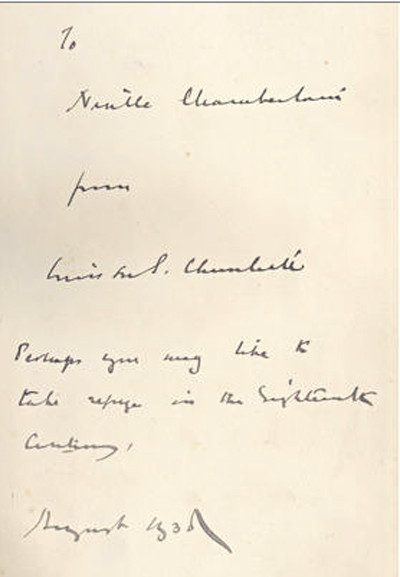
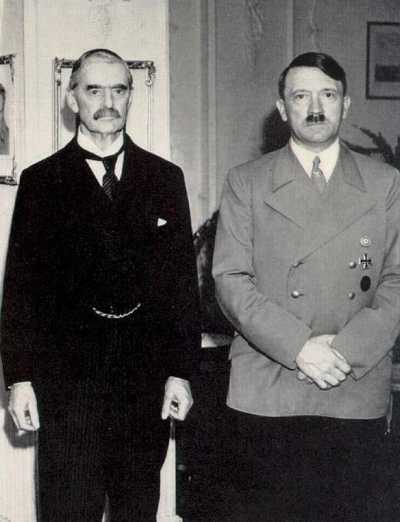
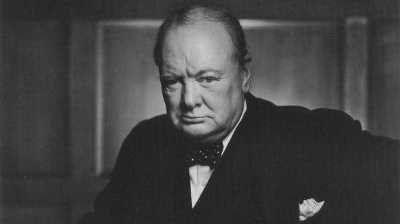
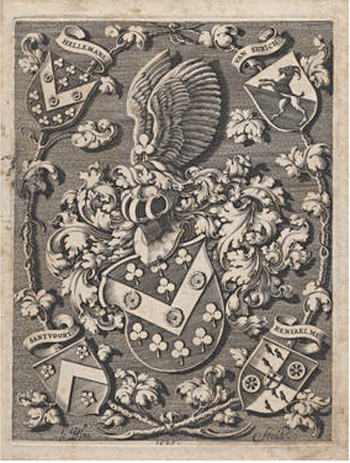

































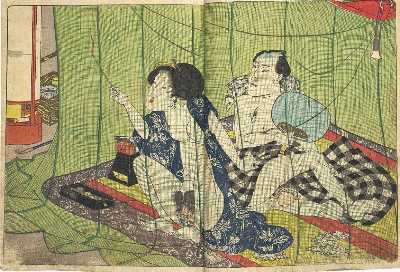

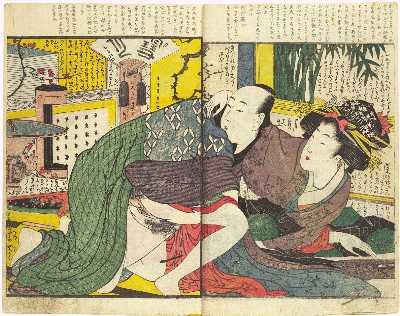























 r
r







